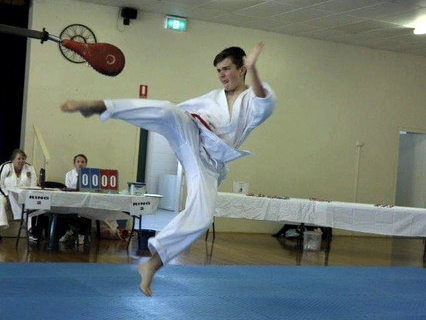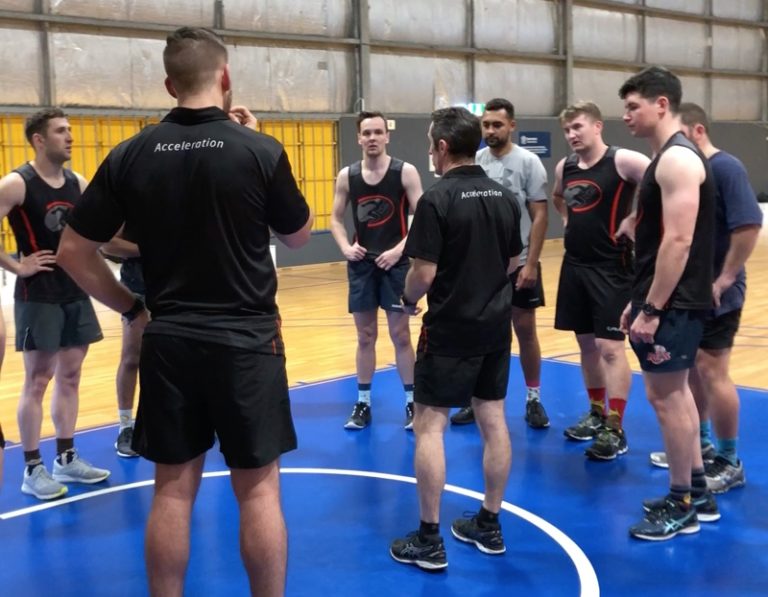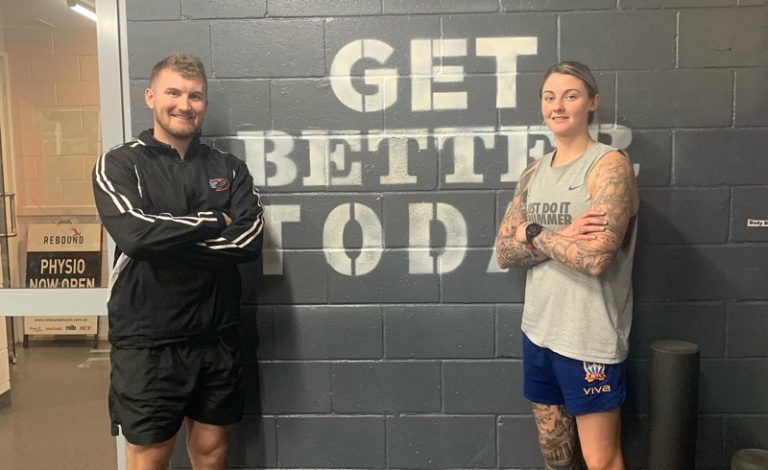Goals Aren’t Just for School

written by Stewart Briggs
Set Goals for Success
Before Libby Trickett (Olympic Gold Medallist Swimmer) was famous, she had an extremely specific goal on her bedroom door. It was the world record time of 53.66 seconds for the 100m Freestyle. At that time of her career it was a crazy fast time, but less than 12 months after she set the goal, she broke the world record in stunning fashion at the semi-final of the 2004 Olympic Trials in Australia.
It came as such a surprise to her that she showed it all on her face immediately after finding out. This reaction immediately endeared her to the Australian public from that moment forward.
She made her goal specific, measurable, attainable (even if she did not really believe it at the time), realistic and timely.
Goals can Make a Remarkable Difference
The power goal setting can have on an athlete’s performance is remarkable.
The main purpose of setting goals is to have a sense of direction that drives an athlete’s determination to reach what they consider as an accomplishment.
Athletes need to know why they are training so hard and what they consider an improvement or achievement.
Having a well-functioning routine is important for athletes who want to be consistent and make improvements, though it is important to recognise when your purpose for training or improvement is off-track or not beneficial for where you want to go. As an athlete, setting goals will increase:
- motivation,
- purpose, and
- willingness to perform to a higher standard.
Sharing Goals is Important
Every athlete should know their personal goals at every moment, and it is important to share these with other people who have an influence in the athlete’s life.
This includes the athlete’s coaches, parents and friends who have the ability and opportunities to be a positive influence on the athlete.
How? Well, coaches need to know how to train the athlete to help them achieve their specific goals. They can shape the path the athlete takes throughout their training programs and prepare them for upcoming competitions.
For parents and friends, being aware of the athlete’s goals will help them to provide support and encouragement, as well as be understanding that the athlete may consider their training and competition more important than other matters at times.
Creating Beneficial and Realistic Goals
An important factor when goal setting is to ensure that the goal is not unachievable at that point in time. A great approach to setting goals is to consider the main goal being the top of a tall mountain.
Realistically, reaching that goal in one attempt is going to leave you feeling exhausted, defeated and most likely disinterested.
Instead, try approaching the mountain progressively. Set a small goal of reaching a lower level first, then when you achieve that, focus on the next section.
The same applies to goals. While goals want to be challenging and rewarding, make sure the journey on the way is not unrealistic and does not result in burn-out.
This method is considered long-term and short-term goals.
Typically, long-term goals are the key success the athlete is seeking. Developing short-term goals will enable the athlete to remain highly motivated and focused on their long-term achievement with reduced feelings of overwhelm.
In Libby’s example, her long term goal was to achieve a world record time of 53.66 seconds within about 12 months.
To reach that her short term goals may have been process related like improving her starts, kick efficiency, improving the back end of her race, etc.
Make SMART Goals
By adopting the SMART principle, athletes can ensure that their goals are beneficial. The examples below use the SMART principle and demonstrate the importance of ensuring goals are valuable to the athlete.
Specific – Goals must directly say what you want to achieve. For example: I want to get faster vs. I want to run 2 seconds faster in my 400m sprint.
Measurable – Goals must be measurable or be able to be calculated. For example: I want to be stronger vs. I want to squat 1.5x my body weight.
Attainable/Achievable – Goals should challenge you, but not be too hard to reach. For example: I want to lose 5kg in 1 week is not achievable, vs. I want to lose 5kg in 6 months.
Relevant/Realistic – Goals should be relevant to your sport, training, ability and interests. For example: A swimming athlete would not set a goal to run a 5km PB.
Time-Based – Goals must have an estimated time or deadline to be achieved by. For example: I want to jump 2cm higher vs. I want to jump 2cm higher in 2 weeks.
Self-Set Goals are Key
Something particularly important to consider is that any goal for an athlete needs to be created by them.
Support from others towards reaching a goal is extremely important, though the goal itself needs to be set by the athlete.
This ensures that the athlete feels in control and can internalise what they have set out to achieve.
Conclusion
The importance of goal setting correlates strongly with the outcome of success for athletes, though simply creating a goal is not what allows them this accomplishment.
The process behind and the work completed through striving towards achieving goals are what enables triumph.
Goals are set as targets and achievements to reach, giving athletes direction and motivation, but it is the hard work and focus throughout the journey that is the winning factor.
A quote by James Clear, author of ‘Atomic Habits’, represents this well: “Goals are good for setting a direction, but systems are best for making progress.”
Further Readings:
Beneath the Surface, Libby Trickett. 2019.
Start with Why, Simon Sinek, 2014.





